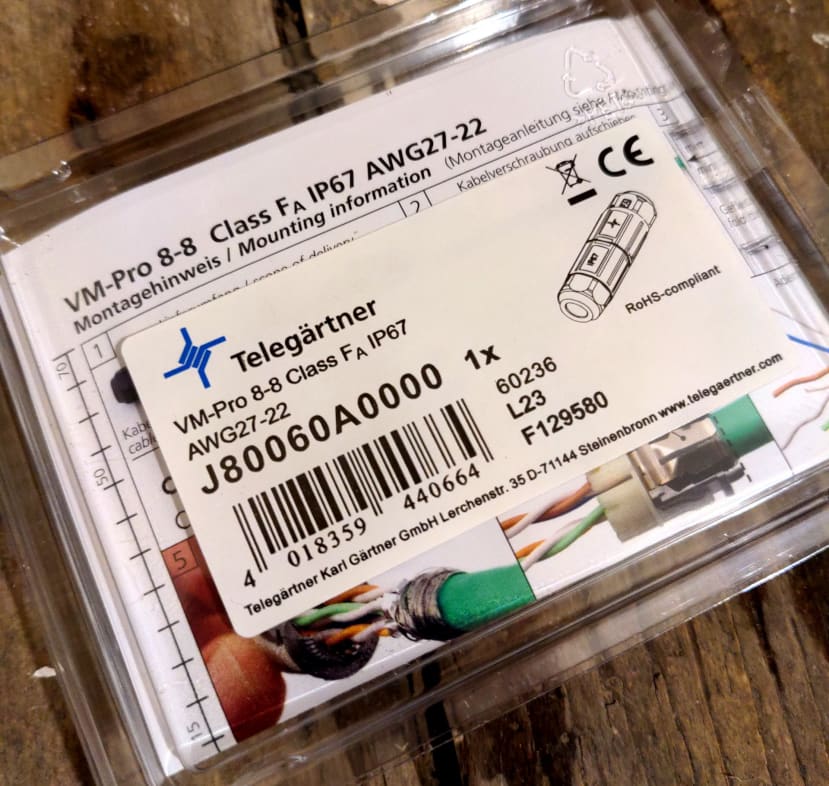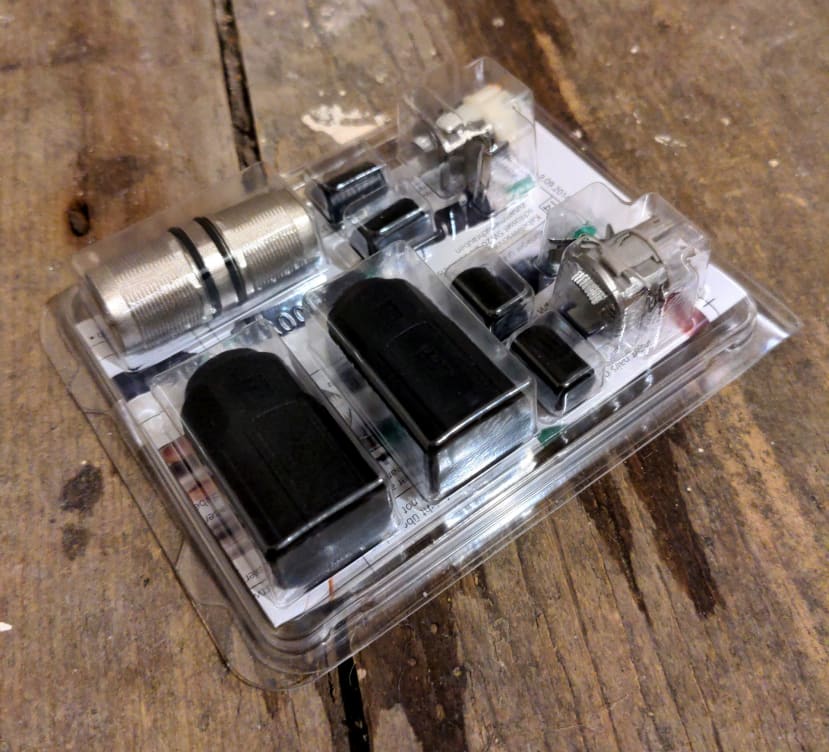Caught Short with Cat 6a
Follow articleHow do you feel about this article? Help us to provide better content for you.
Thank you! Your feedback has been received.
There was a problem submitting your feedback, please try again later.
What do you think of this article?
A tale of Ethernet cabling woe and a reassuring resolution courtesy of Telegartner VM-Pro Connection Modules.
A great thing about infrastructure cabling is that, no matter how well you think you’ve planned everything, it won’t be long until extra cabling or some sort of change is needed. This was the case when recently moving to a new house and this post takes a look at a reassuringly effective solution to extending Ethernet cabling, the Telegartner VM-Pro IP67 rated connection module (878-7386) .
Setting the scene
Like many engineers, I enjoy good cables and high-quality connectors. However, I’m afraid that one thing that I emphatically do not enjoy is Ethernet cabling; I can go many years between needing to terminate the stuff and when I do, I usually end up redoing the first termination a number of times, as I refamiliarise myself with how to do this neatly. Also, truth be told, much as they are suitably time-tested, I regard IDC punch down connections with an air of suspicion and have since first encountered them nearly 30 years ago — I am far happier with crimped and soldered terminations. This is irrational, I know.
When recently moving to a new house we decided to run Ethernet cabling while all the floorboards were up and walls were being plastered. With Cat 6a being the cable of choice, since it would support up to at least 10G speeds over the distances involved, hence was deemed sufficiently future proof. However, it wasn’t long after the work was completed that the heat pump installer announced they would need cabling to connect a first-floor wall-mounted control panel, to machinery located some distance away and on the ground floor. Fortunately, two Cat 6a cables could be utilised — but it did mean that they would need to be extended.
Something else that I am generally not a fan of is extending cables.
A robust solution
When searching for a solution I quickly gravitated towards what might best be described as overkill for the given application, of joining cables located indoors and under floorboards. However, considering my dislike of terminating Ethernet cabling — and extending cables! — it was also important that I could sleep soundly at night and a high-quality product should do the job well.
It should be noted that, in addition to being IP67 rated, the product in question is Class Fa and specified for use in up to 1000MHz installations, i.e. with Cat 7a cabling.
Above we can see the connection module components and beneath these the instructions.
Included are two sets of sealings, one pair for cables that range from 5.5-6.7mm in diameter and the second pair for cables of 6.7-7.7mm in diameter.
After the correct size sealing has been slid onto the cable, this is followed by the gland housing.
The cable outer jacket is stripped and the drain wire is wrapped around.
There are two wire managers, one for each cable to be joined and with slightly different wire ordering.
The pairs were separated out and positioned prior to sliding the wire manager over, as it’s easier than trying to rearrange the order afterwards.
The wires were next inserted in their respective positions and trimmed.
Finally, the two-wire managers were inserted into the plug body and the cable glands tightened.
Conclusion
I have to say that this is probably the first time that I have come close to enjoying terminating Ethernet cable and that is saying something, considering that Cat 6a is edging closer to the inflexible side and more of a faff than Cat 5e, for example. This can squarely be attributed to using high quality — if decidedly overkill in this application — product. Furthermore, the chosen solution will also lay my cable joining irrational fears at rest and avoided potential upset, had I instead unreasonably insisted that we rip the floorboards up and run brand new cables!











